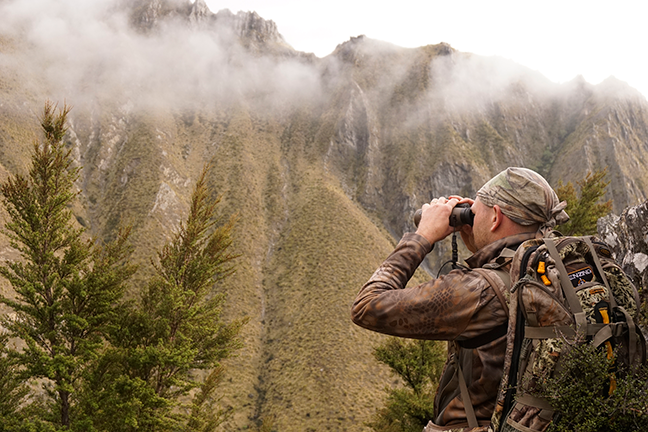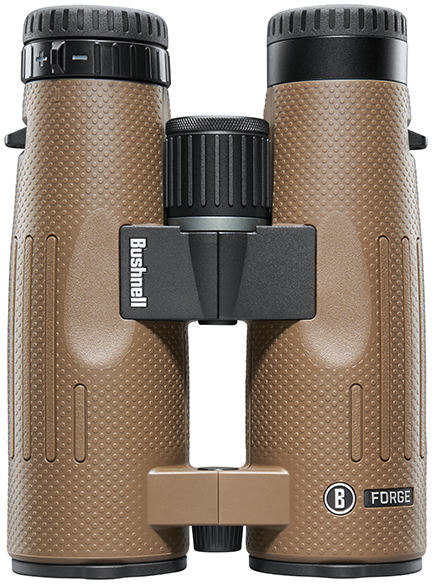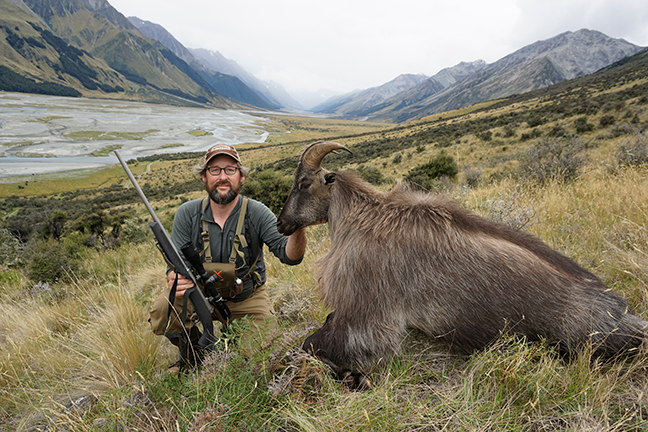July 12, 2018
By David Draper
 Bushnell has been in the optics game a long time, but their offerings had hit a plateau in recent years with nothing major in the innovation department. A solid reputation for quality optics and line extensions kept them in the game, but other manufacturers were biting at their market share. Realizing the competition was getting fiercer, those in charge at Bushnell made it a company-wide mission to get back in front of the pack.
Bushnell has been in the optics game a long time, but their offerings had hit a plateau in recent years with nothing major in the innovation department. A solid reputation for quality optics and line extensions kept them in the game, but other manufacturers were biting at their market share. Realizing the competition was getting fiercer, those in charge at Bushnell made it a company-wide mission to get back in front of the pack.
For 2018, they deliver on that promise with three new lines of optics for hunters, from the entry level Engage that offer straightforward quality at a friendly price, to the feature-laden Nitro line to the pro-level Forge with cutting-edge optics and field-ready features for those hunters and shooters who require serious gear.
I got the chance to handle all three lines on the trade show circuit this past winter, and found Bushnell's mission to build the best promising. However, the proof would come in the field, and for that I chose the Forge line of optics for a tough test in the high peaks of New Zealand.
Bushnell Forge 10x42 Binoculars
Not much bigger than a large Labrador retriever, chamois are small animals. And the mountain range running through of New Zealand's southern island is big country. Finding a chamois, and determining the trophy size of its diminutive horns, require a lot of time behind a good set of binoculars.
Advertisement
After a heli-ride to the highest peak, my friends and I perched above a long valley and spent the morning picking apart rocky peaks, stony slides and some of the densest brush I've ever encountered. The proverbial needle-in-a-haystack comes to mind, but one made a bit easier thanks to Bushnell's new Forge binos we were testing on this trip.
I locked my elbows solidly into my knees, pressed the 10x42s tight to my face and slowly worked over the jagged cirque. Secretly I wished for a set of Bushnell's 15x56 Forge binos securely mounted onto a tripod, but this smaller set soon proved their worth.
 The glass inside the Forge's rubber-armored barrels is extra-low dispersion, which helps correct chromatic aberration. This of it like this: as light comes through the lenses, the colors shift focal planes, reaching your eyes unequally. Through the optical wizardry of ED Prime glass, along with proprietary wide-band coating and phase-coated prisms, Bushnell's Forge binoculars increase color saturation, contrast and detail. What this means to you is a brighter, sharper picture in all light conditions.
The glass inside the Forge's rubber-armored barrels is extra-low dispersion, which helps correct chromatic aberration. This of it like this: as light comes through the lenses, the colors shift focal planes, reaching your eyes unequally. Through the optical wizardry of ED Prime glass, along with proprietary wide-band coating and phase-coated prisms, Bushnell's Forge binoculars increase color saturation, contrast and detail. What this means to you is a brighter, sharper picture in all light conditions.
Advertisement
Technical jargon aside, I found the Forge binos to be a big leap up from Bushnell's past offerings, and on par with other premium optics in their price range. The 10x42s are a bit long (6.7 inches) and somewhat heavy (30 oz.), but that heft proved beneficial during extended glassing sessions as it helped steady the image.
MSRP: $480
Bushnell Forge 3-18x50 Riflescope
Our airy perch quickly gave up the goods. It wasn't long before I picked up a single chamois feeding just across the valley from our spot. Soon, our guide, Dan Rossiter found up three more just below us, and someone spotted another farther down the valley. In the bright sun, the little animals stood out, though they disappeared into the thick heather just as quickly.
As three hunters itching for their first chance at a chamois, we decide to make a play on the trio below us. A sneaky stalk quickly turned into a semi-controlled fall as the mix of loose rock hidden below the brush sent us sliding down the chute. Somehow the chamois didn't see or hear us, though they did pick up their pace a bit as they fed through a cut in the hillside. The last ridge between us and them was still 300 yards away – after that we'd have no chance of getting closer.
 Range was called at 317 yards, and I picked the chamois on the right. It was a steep downward angle and I picked the corresponding hash on the Forge's Deploy MOA second-focal plane reticle. The marks for windage and elevation are clear, without any clutter or Christmas tree effect. The scope is also available with a first-focal plane MOA reticle that has reference numbers corresponding to minutes of angle or an FFP MIL reticle for those who prefer that standard. LR800 and LR600 first-focal plane reticles are also available.
Range was called at 317 yards, and I picked the chamois on the right. It was a steep downward angle and I picked the corresponding hash on the Forge's Deploy MOA second-focal plane reticle. The marks for windage and elevation are clear, without any clutter or Christmas tree effect. The scope is also available with a first-focal plane MOA reticle that has reference numbers corresponding to minutes of angle or an FFP MIL reticle for those who prefer that standard. LR800 and LR600 first-focal plane reticles are also available.
All Forge models include exposed, oversized windage and elevation turrets, with sturdy, tactile clicks at ¼ MOA and a solid zero stop for quick, no-look adjustments. The turrets also lock down so there's no chance of fumbling off zero when handling the rifle or pushing through heavy cover. Side parallax adjusts from 10 yards to infinity, allowing hunters and shooters to dial in just the right clarity throughout the focal range.
For this hunt, I topped the Savage .30-06 with the mid-range Forge with 3-18 zoom. Other available models include a 2.5-15x and 4.5-27x, all with 50 mm objectives. Forge scopes are built on 30 mm tubes, which are all the rage among long-range shooters nowadays. They, along with the large turrets, oversized bell and zoom throw lever add a bit of weight. My particular scope neared 30 ounces a bit heavy if you want a mountain rifle, but about average for most long-range applications. Overall length of the 3-18x50 is 14.4 inches.
The chamois bucked at the shot, a sure sign of a hit. But these little animals are tougher than they look and, after a bit of a scramble, I hit the chamois a second time and he was down for good. It was a bright day and the Forge's optics were crystal clear. A few days later I shot a bull tahr under cloud cover at the end of a long day of hunting New Zealand's steep mountains and the view was just as clear.
 I attribute this, and subsequent low-light performance on the range at home, to the Forge's fine, extra-low dispersion glass that make up its lenses. All are multi-coated for maximum light transmission, contrast and clarity. Perhaps the most impressive coating is Bushnell's new Exo Barrier on the exterior glass. This unique waterproofing disperses rain and fog into tiny droplets that won't obscure the sight picture. It's also smudge proof and, in testing, I've seen permanent marker wipe right off. While a waterproof coating may not sound impressive, the Exo Barrier definitely has a wow factor that has to be experienced to really grasp.
I attribute this, and subsequent low-light performance on the range at home, to the Forge's fine, extra-low dispersion glass that make up its lenses. All are multi-coated for maximum light transmission, contrast and clarity. Perhaps the most impressive coating is Bushnell's new Exo Barrier on the exterior glass. This unique waterproofing disperses rain and fog into tiny droplets that won't obscure the sight picture. It's also smudge proof and, in testing, I've seen permanent marker wipe right off. While a waterproof coating may not sound impressive, the Exo Barrier definitely has a wow factor that has to be experienced to really grasp.
MSRP: $800
